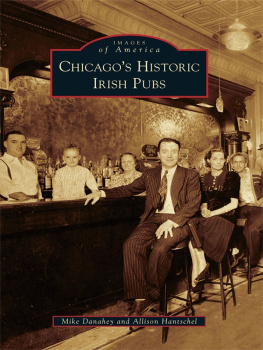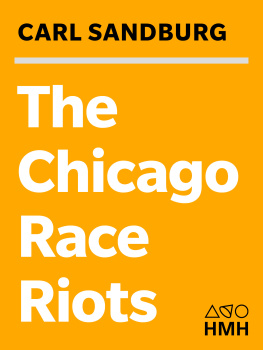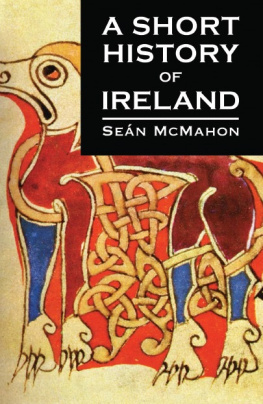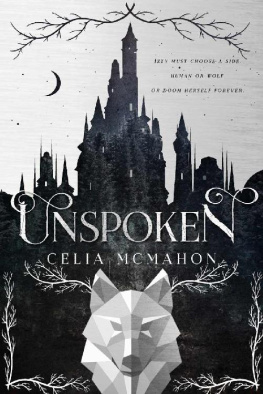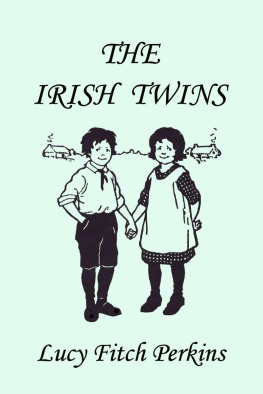Copyright 1995 by The University Press of Kentucky
Paperback edition 1996
Scholarly publisher for the Commonwealth, serving Bellarmine University, Berea College, Centre College of Kentucky, Eastern Kentucky University, The Filson Historical Society, Georgetown College, Kentucky Historical Society, Kentucky State University, Morehead State University, Murray State University, Northern Kentucky University, Transylvania University, University of Kentucky, University of Louisville, and Western Kentucky University.
All rights reserved.
Editorial and Sales Offices: The University Press of Kentucky
663 South Limestone Street, Lexington, Kentucky 40508-4008
www.kentuckypress.com
The Library of Congress has cataloged the hardcover edition as follows:
McMahon, Eileen M., 1954
What parish are you from? : A Chicago Irish community and race relations / Eileen M. McMahon.
p.cm.
Includes bibliographical references and index.
ISBN 0-8131-1877-8 (alk. paper)
1. St. Sabinas (Church : Chicago, Ill.). 2. Chicago (Ill.)Church history. 3. Irish AmericansEthnic identity. 4. CatholicsIllinoisChicago. 5. Race relationsReligious aspectsCatholic Church. 6. Chicago (Ill.)race relationsCase studies. 7. Irish AmericansIllinoisChicagoCase studies. 8. ParishesIllinoisChicagoCase studies. 9. Catholic ChurchIllinoisChicagoCase studies. I. Title.
BX4603.C5S7851995
305.62077311-dc2094-24300
Paper ISBN-10: 0-8131-0894-2
Paper ISBN-13: 978-0-8131-0894-0
This book is printed on acid-free recycled paper meeting the requirements of the American National Standard for Permanence in Paper for Printed Library Materials.
Manufactured in the United States of America.
| Member of the Association of
American University Presses |
Acknowledgments
When I was growing up in St. Linuss parish, I never suspected that parish life had historic significance. It was simply the way in which we lived our lives. The church steeple stood as a sentinel above the neighborhood and all the Catholic children attended the parish school. I remember thinking when I was young that others not of the parish must belong to the public religion because they went to the public school. We werent above teasing them for having to go to school on holy days. In a generic sense, we considered ourselves American. But the everyday world, as far as we could discern, was divided between Catholics and Protestants. Our Irishness was something we brought out on St. Patricks Day when wed dye our milk green, listen to Bing Crosby sing Did Your Mother Come From Ireland? and wear green ribbons in our hair. As we got older, my friends and I debated whether we were American or Irish. We never resolved this question, in part because we knew precious little about our heritage.
As I grew older and left the world of the parish, I began to understand its singularity in urban America and have come closer to answering the question the companions of my youth and I pondered. In my quest to do so, I have become indebted to many people. I would like to especially thank Lawrence J. McCaffrey for encouraging me to pursue Irish studies with him at Loyola University of Chicago. I am grateful to William Galush for his thoroughness and encouragement as he directed me through this study and for sharing his knowledge of ethnic and Catholic America. Special thanks are also due Lewis Erenberg and Kathleen McCourt for their helpful suggestions. Thanks to Ellen Skerrett for introducing me to St. Sabinas.
Several other people assisted me in researching this work. Archie Motley and the staff at the Chicago Historical Society and John Treanor and his staff at the Archdiocese of Chicago Archives were very helpful in making their collections available to me. Sister Toman at the Sinsinawa Dominican Archives provided gracious assistance with their records. Special thanks are due to Msgr. John J. Egan for making his personal papers readily available to me. I also wish to thank the staffs at the Chicago Municipal Reference Library, Northwestern Universitys Deering Library, Mundelein College Resource Learning Center, De Paul University Library, the Regenstein Library of the University of Chicago, and Loyola University of Chicagos Cudahy Library.


